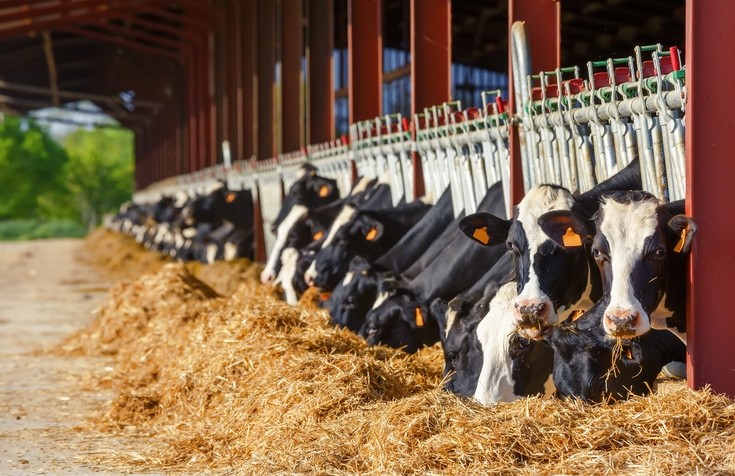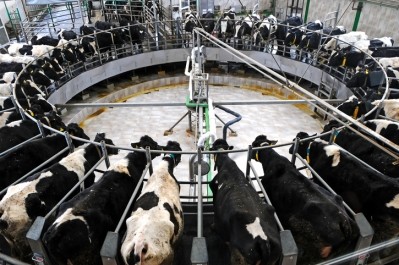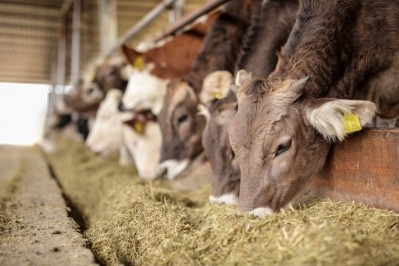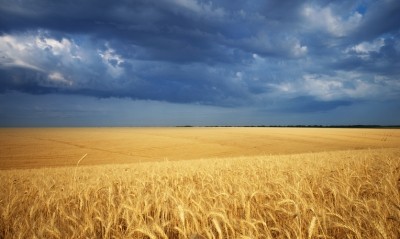China: Whole-crop wheat hay may support cattle production, limit environmental footprint

An international team of researchers, based at the University of Saskatchewan in Canada and the State Key Laboratory of Animal Nutrition at China Agricultural University, examined the use of whole-crop wheat hay (WCWH) as a replacement for Chinese wildrye or Leymus chinensis (LC) in dairy feed.
The team published its work in the Journal of Dairy Science.
“It could be hypothesized that WCWH may replace LC in the diets of finishing dairy bulls without having a negative effect,” the researchers said. “The objectives of the trial were to study the effects of WCWH as a substitute for LC on blood parameters, rumen fatty acid, and microbial flora in Holstein bulls.”
The team found few production differences for cattle getting either of the feed ingredients. "
The data, they said, showed WCWH can replace LC in the diet of Holstein bulls in the fattening stage with no negative effects on the blood indicators, fatty acids, and microbiome, they added.
Why whole-crop wheat hay?
Chinese wildrye or LC is a species mainly grown in the Eurasian Steppe but often imported to North and Central China, said the researchers. Livestock farms of these regions have to buy LC and transport it over long distances. Therefore. they are seeking alternative roughage sources to avoid the high line-haul expenses of LC.
There are large supplies of wheat straw in those regions, they said. The straw is often burned, which wastes resources and generates air pollution, noted the researchers.
“Applications of agronomy and plant breeding methods for the production of whole-crop wheat (WCW), together with its potentially lower production cost, have resulted in the increased use of this crop as feed for ruminants,” they said. “For ruminants, ingestion of WCW, which consists of wheat straw and wheat grain, has greater nutrient content and higher feed efficiency than ingestion of wheat straw alone.”
Previous work has examined the use of fermented whole-crop wheat on dry matter intake and rumen fermentation for beef cattle, they said. It has also been noted that adding grain to ensilaged straw and chaff may reduce enteric methane emissions.
The use of WCWH is anticipated to conserve energy and reduce pollution, the researchers said. However, different forage types may influence rumen fermentation and rumen microbes.
There is little published information regarding the use of WCWH as a replacement for LC, they said. “We tested several blood parameters, fatty acid composition of rumen liquid and serum, and the microbiomes of Holstein bulls who were exposed to a changed diet,” they added.
Feeding trial
In the feeding trial, 12 bulls were given one of four diets in a 4 x 4 Latin square design, said the researchers. Animals received each diet for a period of 22 days before changing to a new diet – 17 days for acclimation and 5 days of sample collection.
The diets used included 45% roughage and 55% concentrate with four varying levels of WCWH inclusion, they said. Inclusion rates were 0, 33, 67 and 100% in substitution of LC.
Forages and residues were collected for analysis from day 18-22, they said. Blood samples were taken for evaluation on day 18, and rumen samples were collected on day 22 of each feeding period.
Results
For several of the areas examined, no difference was found for bulls regardless of diet, said the researchers.
“Results from this study indicate that the use of WCWH as a substitute for LC did not negatively affect blood parameters, rumen fatty acid levels, and microbial flora composition of Holstein bulls,” they said. “These results provided further confirmation and explanation of the feasibility of utilizing WCWH as forage for ruminants in the farming industry.”
Ruminal microbial flora was similar for bulls on all diets, and no changes were noted in the proportion of ruminal protozoa and methanogens, they said. The ruminal amounts of the bacteria Ruminococcus flavefaciens and Fibrobacter succinogenes also were similar among diets.
“We conclude that switching the diet of feeding bulls from LC to WCWH did not significantly affect the rumen microbial flora in the present study."
Similarly, there were few differences found in the saturated fatty acid and unsaturated fatty acid proportions seen in rumen liquid or in the monounsaturated fatty acids or the polyunsaturated fatty acids, said the researchers. Linoleic acid amounts were similar among the diets, but tended to be higher for the cattle getting the 100% WCWH diet.
The blood serum collected also displayed similar results for proportions of saturated, monounsaturated, and polyunsaturated LCFA, they said.
Cattle getting the 100% WCWH diet had a larger concentration of urea nitrogen than those getting the other diets, they said. However, there were no differences for “serum glucose, triglycerides, cholesterol, total protein, albumin, HDL-C [high-density lipoprotein cholesterol], LDL-C [low-density lipoprotein cholesterol], and BHBA [beta-hydroxybutyrate] concentrations.”
Source: Journal of Dairy Science
Title: Effects of Leymus chinensis replacement with whole-crop wheat hay on blood parameters, fatty acid composition, and microbiomes of Holstein bulls
DOI: doi.org/10.3168/jds.2017-13267
Authors: W. Niu, Y. He, H. Wang, C. Xia, H. Shi, B. Cao, H Su













